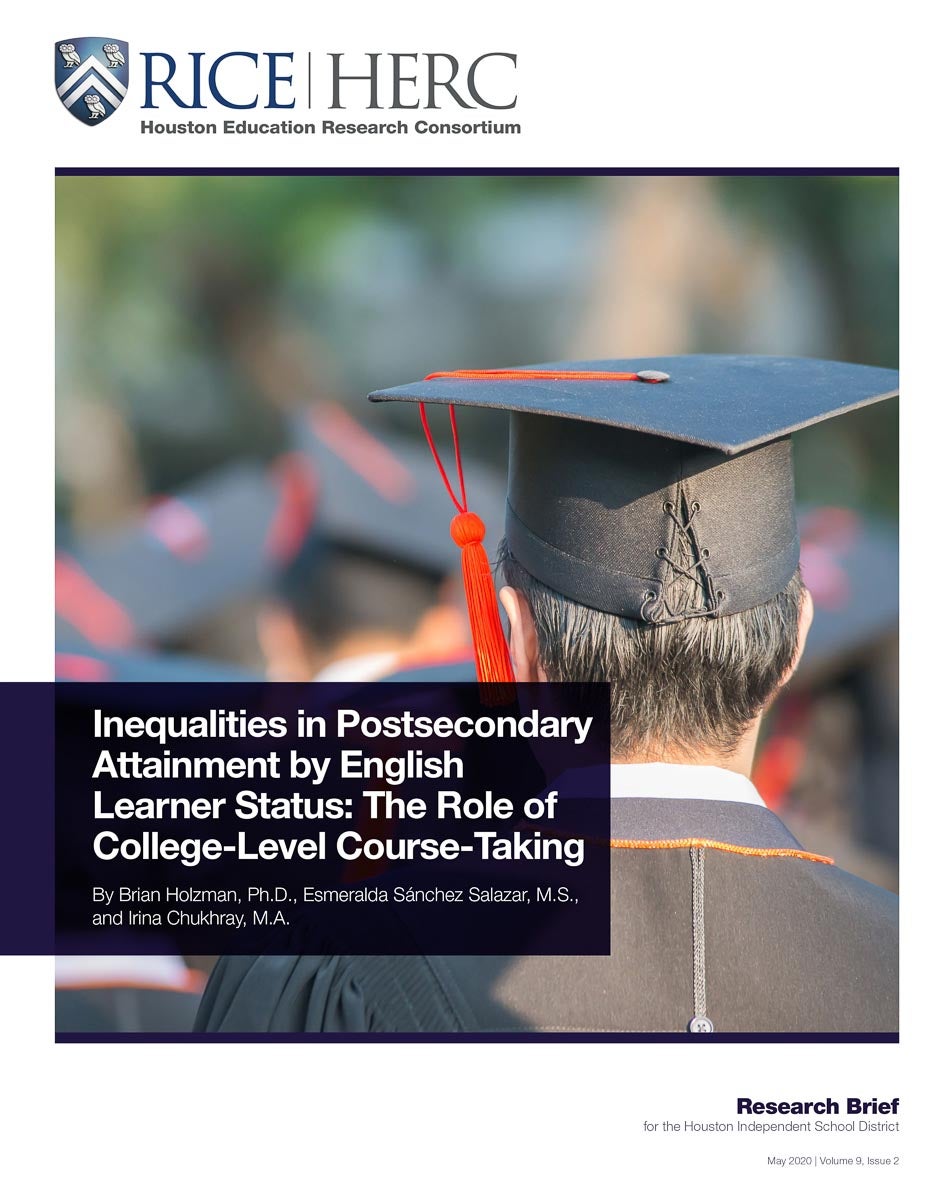According to the National Center for Education Statistics, it is estimated that 10% of U.S. public school students are currently classified as English Learner (EL). This report finds that gaps in four-year college outcomes by EL status are large, but are entirely explained by differences in sociodemographic, academic and school characteristics.
- After controlling for sociodemographic and school characteristics, EL students reclassified in middle and high school take fewer college-level courses during the junior and senior years of high school than Never EL students.
- In contrast, Never EL students and EL students reclassified in elementary school appear to take similar numbers of college-level courses.
- When considering academic characteristics like reading test scores, math test scores, average course grades and the number of college-level courses taken, differences in college-level course-taking explain 7% to 22% of the gap in four-year college enrollment between Never EL students and students reclassified in elementary, middle and high school.
- In terms of four-year college completion, differences in college-level course-taking explain 14% of the gap between Never EL students and students reclassified in middle school and 40% of the gap between Never EL students and students reclassified in high school.


